Before I begin I’d like to make it clear that neither I nor my husband have any objection to, anger or judgement towards parents who have chosen to vaccinate their children.
Some of our most dear friends and family have vaccinated their kids (with the complete government required schedule) and we still believe them to be outstanding guardians to their offspring.
Most parents are doing what they do with their children because they know or believe it to be the best thing for them. And we are no different….
we just chose NOT to vaccinate our kid.
Before I begin my spiel on the reasons why, it’s a good place to explain what life for an un-vaxxed toddler looks like here in Australia at the moment.
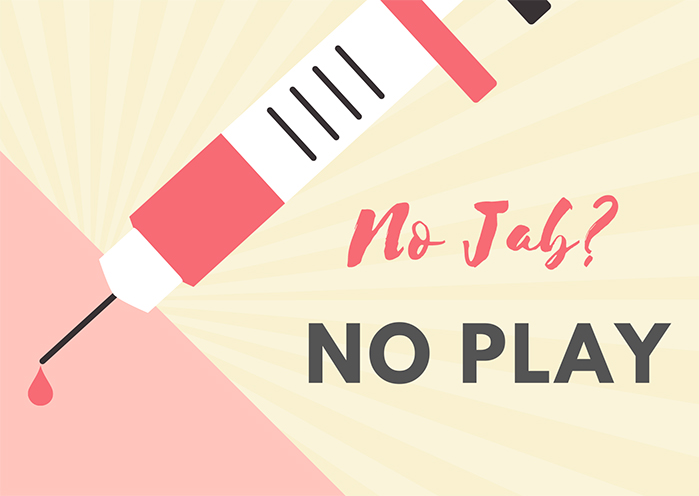
– No daycare or pre-school admittance unless ‘up-to-date‘ with the schedule after a ‘No Jab No Play’ policy in 2016 came into action from the Australian government.
– Government child benefits are cut or lessened significantly in a ‘No Jab No Pay’ scheme.
– Where once a ‘conscientious objection’ was sufficient enough to excuse an unvaccinated child from the above, now only if a child has either a natural immunity to certain diseases or has health vulnerabilities, are they medically excluded from the policy.
You can see why this has become a heated topic for parents of all backgrounds across Australia, United States, United Kingdom, Germany, France and Italy and more.
And there’s good reason for people to get up in arms. But this isn’t a post to convince you or wag my fist in your face.
This is a post to simply voice some of the reasons why WE think we’re doing the best thing we know to do for our daughter.
1. THE COCKTAIL
Thimerosal (mercury), formaldehyde and aluminum are just three of several other preservatives/immune boosters found in a standard vaccination.
It never sounded like the kind of cocktail I wanted to give to my newborn on day 1, alas these are the (debated) toxic chemicals that exist as part of the government’s schedule of immunization.
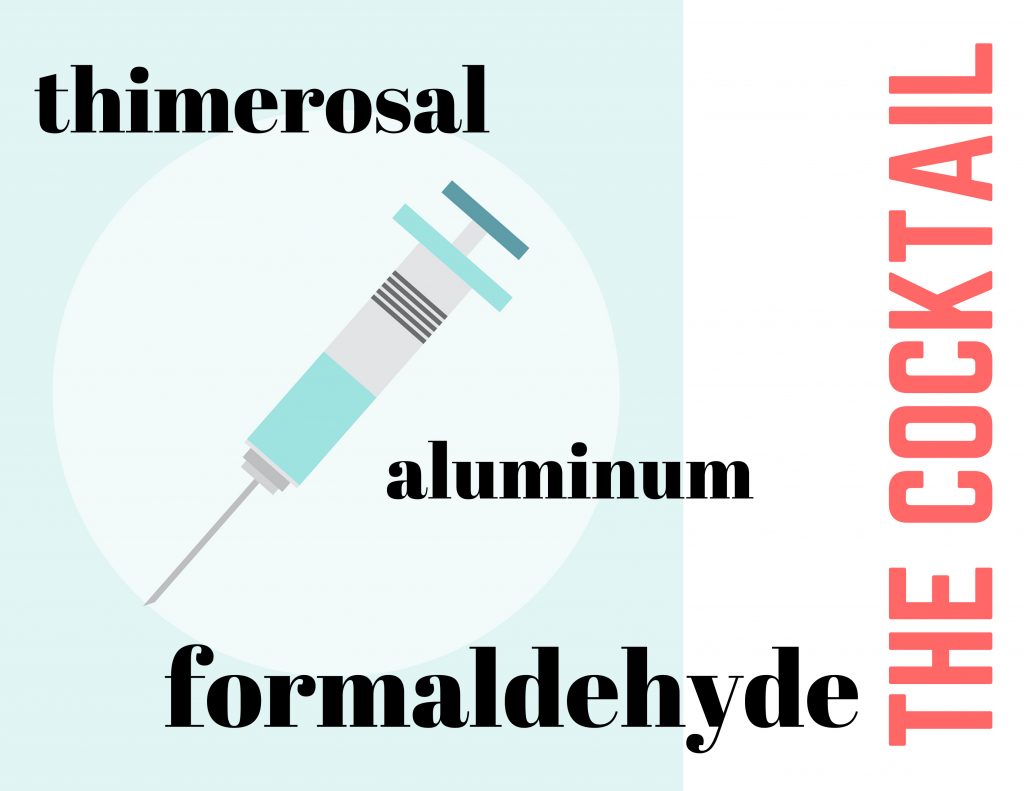
Thimerosal or ‘mercury’ was removed from all childhood vaccinations in 2000, after studies made by the Children’s Health Defense showed that exposure to the known neurotoxin affected human cognitive abilities, memory, vision, co-ordination, tremors, skin rash and mood.
While thimerosal was removed from most vaccine batches, it still exists in one type of Hep B vaccine still injected into infants in Australia.
Formaldehyde is used in vaccinations to kill unwanted bacteria and viruses, but is also considered carcinogenic by the International Agency for Research on Cancer and deemed a group 1 agent for cancer. While the dose is low, formaldehyde in vaccinations for adults may have little affect on our bodies, the safety levels for infants and children have never been determined.
Aluminum is known as an ‘adjuvant’ which boosts the body’s immune response to the disease being vaccinated against. While traces of aluminum are naturally found in water, air and food, it is still considered to be a neurotoxin (poisonous substance that disrupts the normal function of nerve cells).
It is noted by medical scholars that when aluminum is injected it is absorbed almost completely by the body (bypassing the gastrointestinal tract) compared to the .04% absorbed when ingested naturally.
According to medical journalist Neil Z. Miller vaccines containing aluminum were added to the childhood immunization schedule when vaccines containing mercury were removed in 2000. Babies began receiving 25% more aluminum before 18 months old, making an infant’s total amount of aluminum intake 4,925mcg. These levels of aluminum appear to disrupt the “maturation of the immune system in infants and children.”
Medical scholars worldwide agree that not enough study has been done on the early life exposure to aluminum in vaccines and it’s safety.
Beyond all else, the combination of these toxins (and several others) alongside their continued administered dosage through injections, is thought to be a key cause of toxic stress to an infant’s neurological development.
2. BLOOD-BRAIN BARRIER
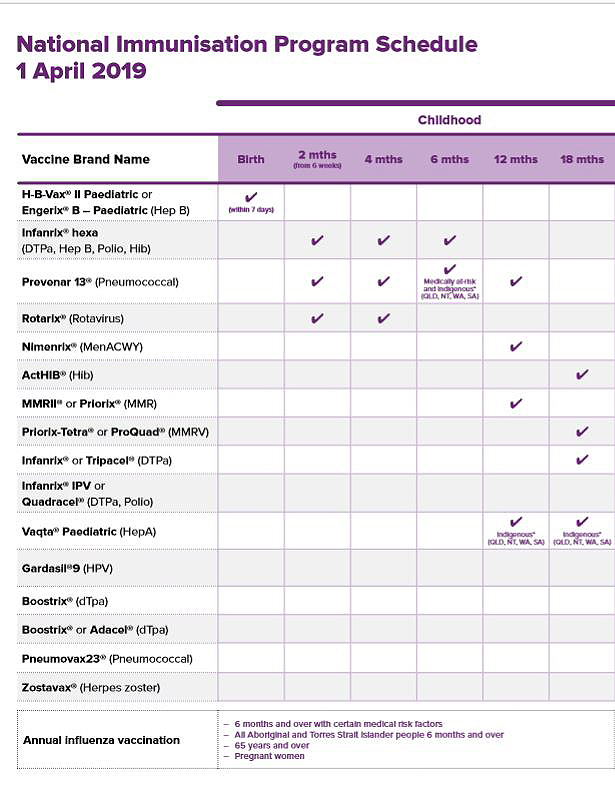
When a child is first born up until the age of two the child’s blood-brain barrier is more permeable to toxins. Their kidney functions are not mature enough to eliminate them, therefore infants and children have a greater risk than adults of adverse reactions to vaccines.
In Australia the schedule requires a child to have approximately 18 vaccinations before the time they are 2 years old. That’s a lot of toxins potentially entering the brain.
Renowned research scientists Christopher Shaw and Lucija Tomljenovic have publicly issued the warning, “Because children may be most at risk of vaccine-induced complications, a rigorous evaluation of the vaccine-related adverse health impacts in the pediatric population is urgently needed.”
3. TOO MUCH MYSTERY
As Shaw and Tomljenovic similarly state, there is still a great deal about vaccinations we still don’t know.
Not enough studies have been undergone, not enough transparency has been shown by pharmaceutical companies and the changing climate of the world’s disease (it’s spread and mutation) has affected our understanding of it.
There isn’t enough information for us to be fully confident either way.
4. DEADLY OR NOT?
Regardless of the fact that Australia (along with most other developed countries) have successfully eliminated diseases such as polio, (endemic) measles, and rubella, children from birth to 18 months old are being vaccinated against them.
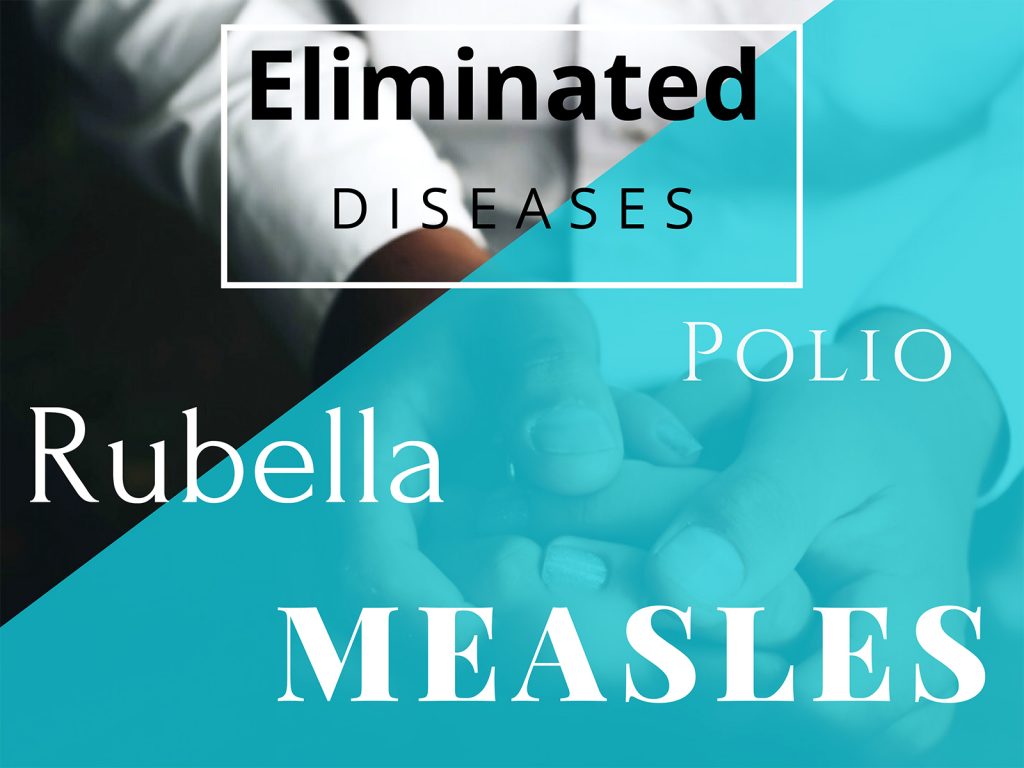
Hepatitis B is another vaccine (administered at birth) that is only ever transmitted through sex, needles or vaginal birth (if the mother has been tested positive). Since pregnant women are tested for Hep B at the earliest possible moment, the coast should be otherwise clear for babies contracting Hep B.
So that leaves diphtheria-tetanus-pertussis (DTPa), Hib, rotavirus, pneumococcal, mumps (part of MMR vaccine), meningococcal (MenACWY), varcella or chickenpox (MMRV) and Hep A as an actual threat to children in Australia.
Out of these diseases, ONLY BACTERIAL meningococcal (or meningitis) is statistically ‘common’ and deadly for children.
Mumps was a common childhood illness until the vaccine was introduced in Australia in the 1980’s. While the swelling of the glands looks rather grotesque, it’s considered a mild disease with rare cases having any long-term damage.
Hep A is very rare in Australia, showing symptoms for only several weeks before most people recover.
Chickenpox is one of those diseases you’d probably rather your child contract naturally to save yourself the likelihood of contracting shingles later on in life (a much more serious disease). And as medical research journalist Neil. Z Miller describes, is about as likely to cause a death in a child as ‘being struck by lightening”.
Pneumococcal is a bacteria which (at it’s worst, called ‘invasive’) can infect the bloodstream or membrane around the brain. Antibiotics is the only treatment. Despite having a vaccination, the government openly admits, “There are currently 90 different recognized strains of Streptococcus pneumoniae and no vaccine can protect against all of them”.
Rotavirus is a contagious disease that exists in a child’s stool and is contracted if hands are not washed properly and particles enter through the mouth.
Dehydration and shock due to vomiting and diarrhea is the main cause of fatalities in young children. Though most children contract this virus by the time they turn 5, the acute strand is what causes the deaths. However, according to the Australian health department, approximately 1 child dies a year in Australia out of 10,000 hospitalized for having acute rotavirus (usually under the age of 2).
More children die in Australia under the age of 5 for having the common flu.
Hib is a bacterial infection that may cause meningitis, pneumonia or epiglottitis in children under 5. Though the invasive strand of Hib bacteria is dangerous and severe, since 2006 it has remained steady at a low rate of 0.1 cases per 100,000 population or less in Australia. Most children will come into contact with Hib in the first two years of their life, after which time, will start to progressively acquire immunity through natural exposure to it. Even newborns are naturally immunized from antibodies given to them from their mothers.
Pertussis or ‘whooping cough’ is a respiratory infection which can be particularly fatal for babies up to 6 months old, causing two deaths in total a year in Australia.
Though, compared to the 3,000 deaths per year from influenza, pertussis is a much less likely cause of a child’s death.
What’s more shocking is that Australia only offers pertussis as a combination vaccine with tetanus and diphtheria.
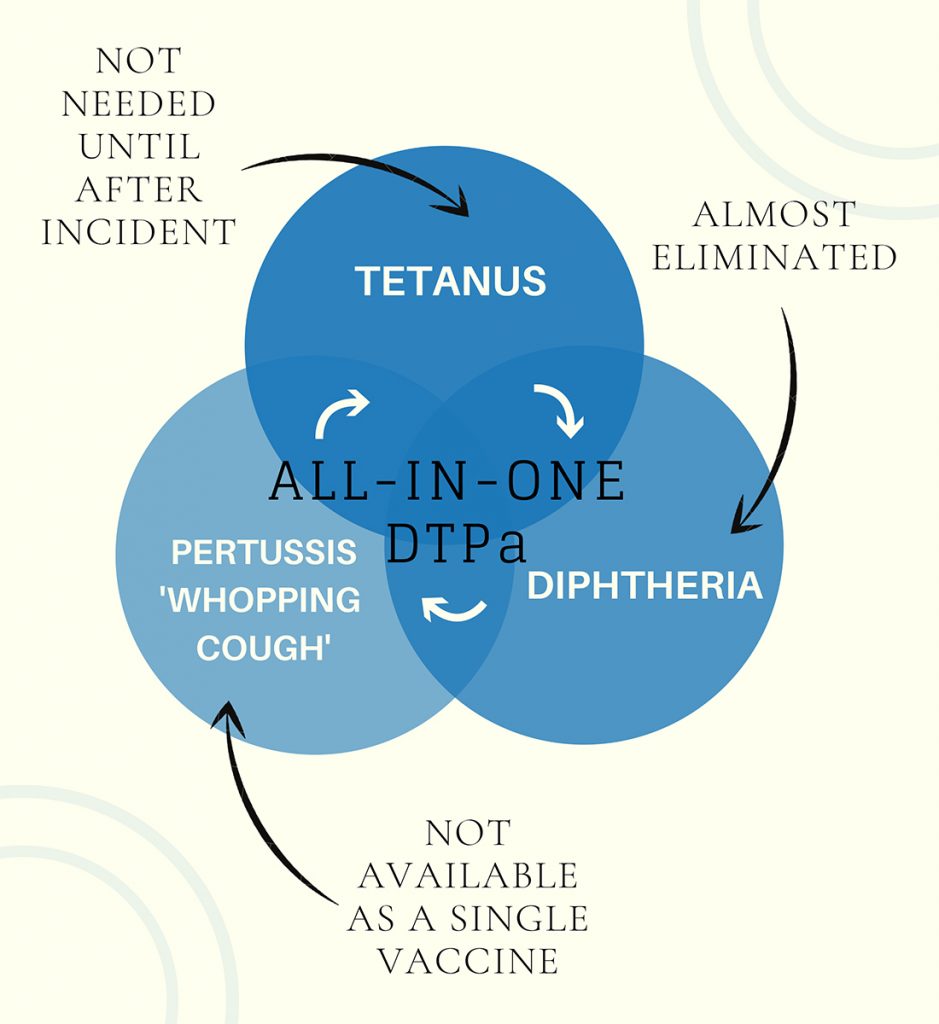
Tetanus is a disease that can occur after a major injury or cut from an object containing tetanus, but occurs only after a 3-21 day incubation period. Meaning, you have up to three days to get a tetanus shot after you injury yourself for safe immunity.
Diphtheria is a bacterial infection affecting the nose and throat. However, Australian cases are at nearly zero since the 1940’s. So your chances of obtaining that disease is also rather slim.
All that said, Influenza (particularly strain A) is your child’s most likely threat to mortality under the age of five. Ironically, it’s the one vaccination that isn’t on the children’s immunization schedule.
5. PERSONAL DAMAGE
If you throw away all the points above, which my husband and I have done on many occasion, it still leaves the question we end on each time.
Why are there still so many cases of damaged children directly after being vaccinated?
We know of two cases personally who have experienced a correlation between the MMR shot and their child becoming unresponsive and changed.
There are simply too many questions, all of which are still left unanswered for us to feel truly comfortable with vaccinating our child (3 years old) just yet.
Nevertheless, since a choice has to be made, here are a few questions to ask yourself to see if NOT vaccinating your child is the RIGHT choice for you and your child. Click on the below for a FREE PDF.
And above all, find a doctor who will listen to you and respect your choices and educate you on BOTH SIDES of the fence.
OUR hope is that one day they’ll be better answers for everyone.
In the meantime, let’s respect each other’s choices and allow our medical choices to remain a choice.
Join the conversation by commenting below!


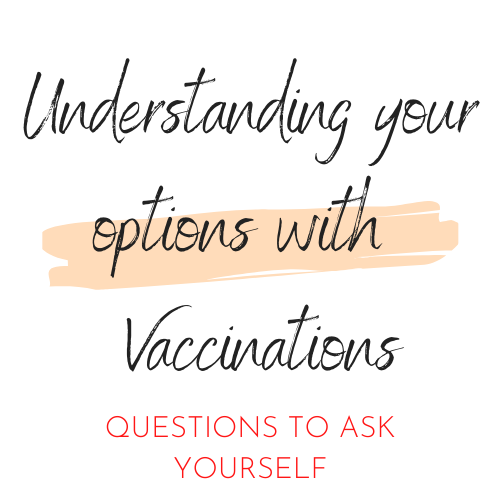

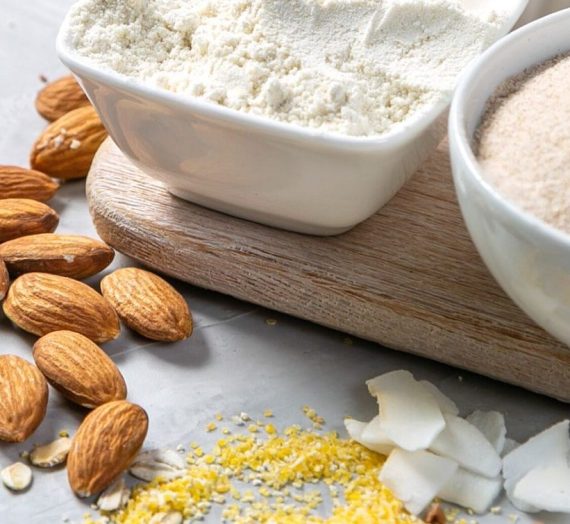

N
Fantastic to read of a like minded family.
Simon
Hi Tara. Thanks for being brave and writing on this topic. We’ve reached a different conclusion about what we think is best for our children (and for the wider society) but I genuinely find it interesting to hear another person’s point of view. I also want to say that we too can see, even from the other side of this particular fence, that you are a wonderful guardian of your child and that you have made your choices in love for her. I especially appreciate the tone of your post and I would want to affirm your desire for people to listen humbly to each other and to discuss these kinds of issues with compassion and respect. Thanks again. Simon.
Tara Karineh
Thank you Simon.
That’s precisely the point. 🙏🏻
Emily Ings
As a mother of a vaccinated child – I wholeheartedly agree with everything you’ve written and I wish I had more options surrounding the current vaccine schedule in Australia. Transparency is what we deserve from the system in place but it’s definitely not what we get. I find myself just hoping and praying that my child won’t be in that percentage of children who react negatively to immunisations (the long term effects we’re yet to discover), but as a parent this weighs heavily on me each time those vaccinations roll around. Thanks for acknowledging both sides on the coin in this article. There is no right or wrong or black and white – right now there’s just a whole lot of grey and we have to make the decisions that we deem are right for our child and our family. And for the most part, we’re all doing our best!
Tara Karineh
Emily this is perfectly said.
You’re an amazing mother and it takes so much courage to stand on both sides of this topic. It pulls at all our hearts because it’s about the health of our children and loved ones. So naturally we get up in arms.
If we have a safe platform to grieve our concerns, remain hopeful for better options and hold each other’s hands through this strange time of unknown in the face of vaccinations, then we’ll be stronger as a community of mothers, fathers and peoples.
Well done mum.
Paul
Well writen Tara! A great resource for like minded parents. Thank you for being brave and sharing. Well done
Kate
Thank you for sharing your voice in a room full of rhetoric. It’s crazy that we can’t have this conversation with more curiosity and respect.
Tara Karineh
Wonderfully said. And thank you. ☺️